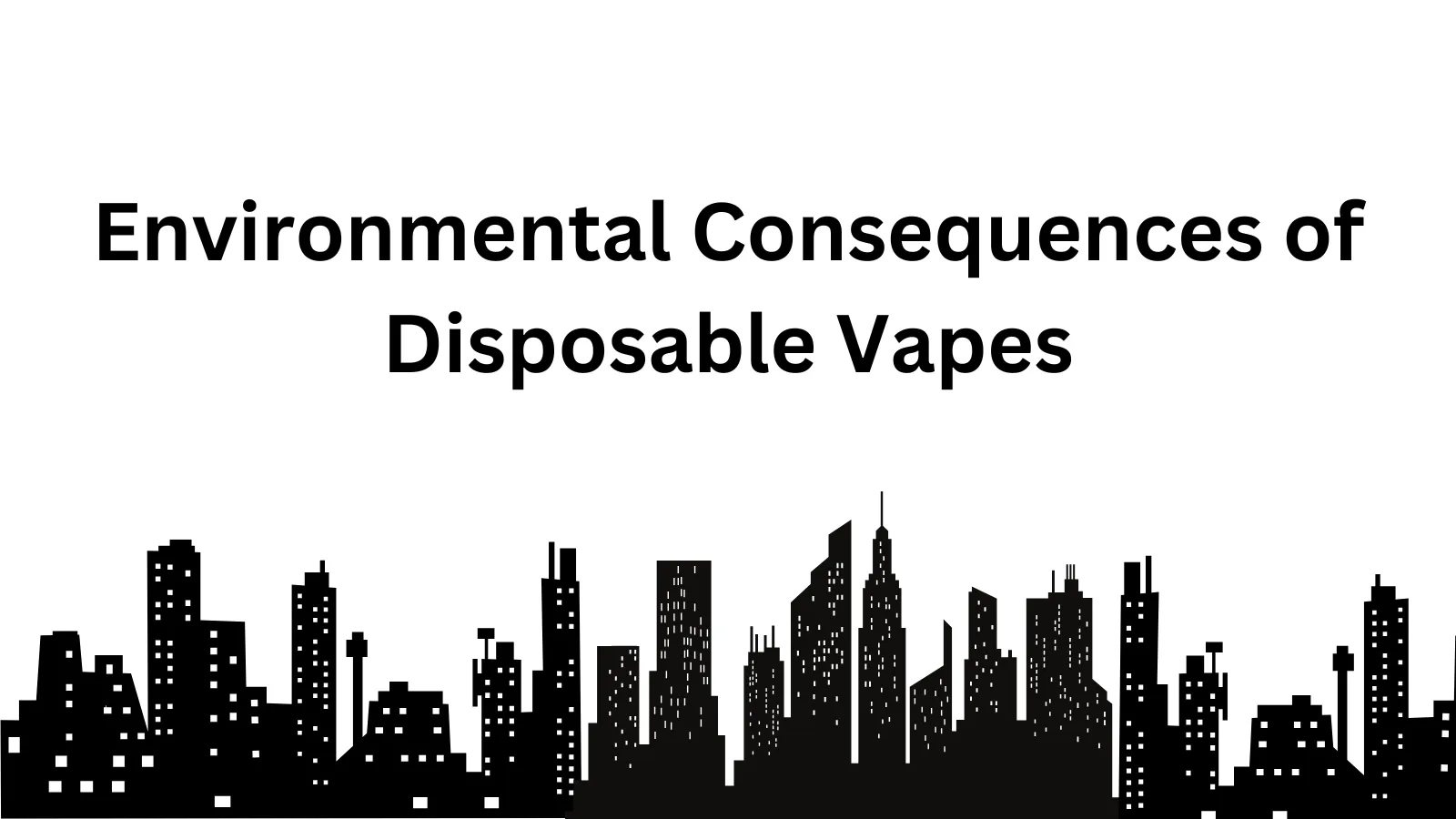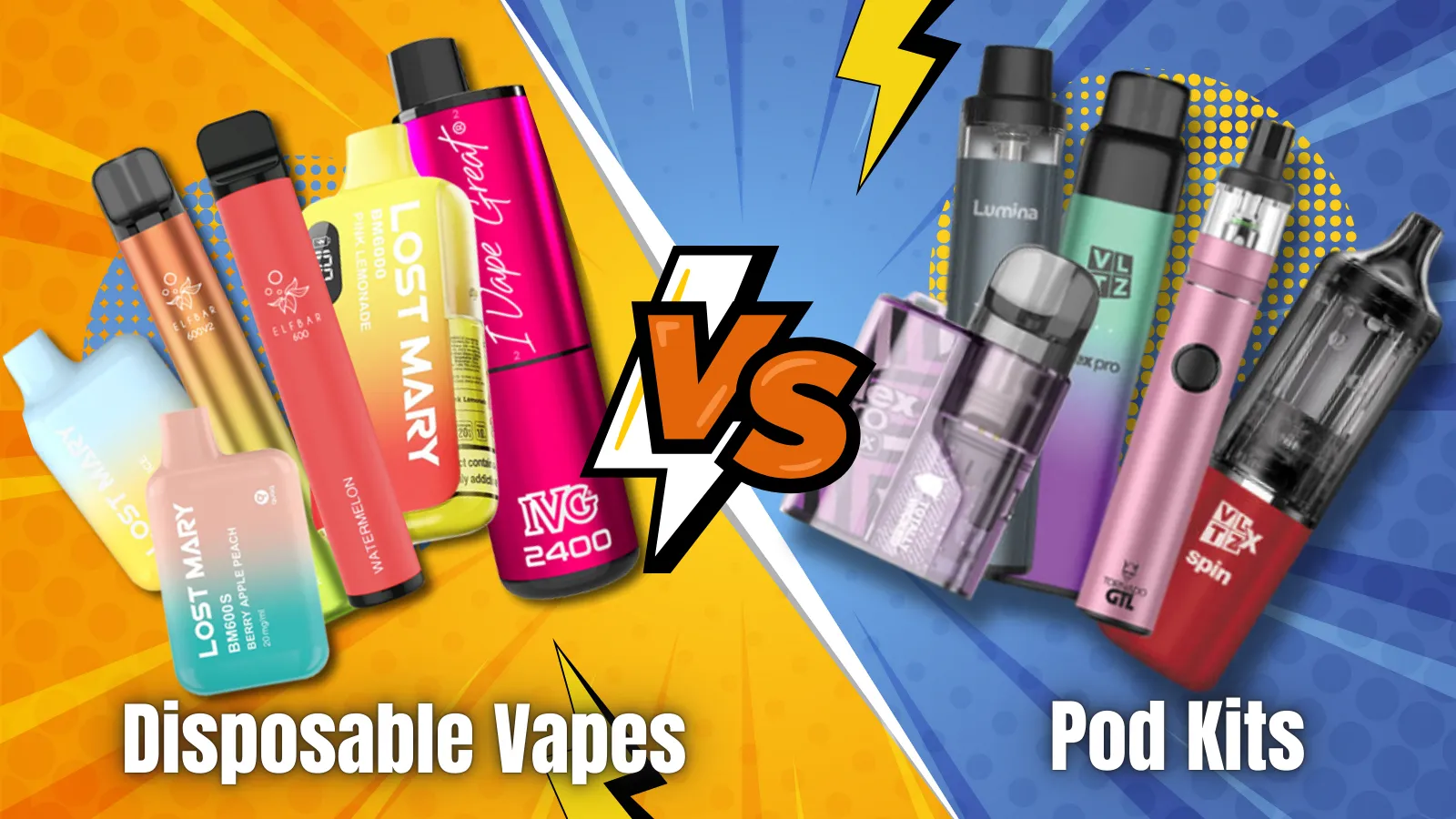The Environmental Consequences of Disposable Vapes and Eco-Friendly Alternatives
September 24, 2024
One of the major contributors through which disposable vapes lead to environmental pollution has to do with their materials, plastics and lithium batteries, which are not recyclable. Moreover, most of the devices end up in rubbish landfills where these chemicals then come into contact with soil and water. More so, carbon emissions are increased due to the manufacture and transportation of the disposable vapes. Some environmentally friendly ways of cutting down waste and reducing the footprint of vaping include refillable vape kits, biodegradable pods, and recycling measures. Therefore, consumers can enjoy vaping by taking care of the environment and choosing the greener option.

The Environmental Consequences of Disposable Vapes and Eco-Friendly Alternatives
Vaping has undoubtedly brought an enormous shift like nicotine consumption. These vapes are considered less harmful than smoking, but the environment has almost been battered by the presence of disposable vapes. The blog outlines various environmental implications of disposable vapes and discusses some different eco-friendly alternatives that may help counteract some of its effects.

Environmental Concerns with Disposable Vapes
Disposable Waste
Disposable vapes generate a lot of waste. A device is used once and then dumped, resulting in a huge pile of plastic and electronic waste that often ends up in the landfill. It takes hundreds of years to break down. Several experts think that plastic components of disposable vapes eventually break down into tiny pieces called microplastics, finding ways to pollute the soil and water sources, which troubles wildlife and ecosystems.

Battery Disposal
When disposable vapes are used and discarded, they contain hazardous lithium-ion batteries. These batteries can leak harmful chemicals into the environment, threatening the quality of soil and water. Incidents leading to fires in waste management facilities after improper disposal of such batteries enhance the level of environmental damage. Additionally, the extraction of lithium for these batteries has negative impacts on the environment, such as habitat destruction and water pollution.

Resource Consumption
The production of disposable vapes utilizes raw materials such as plastics, metals, and lithium, which deplete the world's natural resources and degrade the environment. Manufacturing processes alone consume a lot of energy and are a source of greenhouse gases that contribute to climate change. Furthermore, the transport of these products from manufacturers to consumers adds to their carbon footprint.
Sustainable Alternatives for Disposable Vapes
Refillable Vape Kits
Refillable vape kits have many advantages: they reduce waste by allowing multiple uses, and users can recharge and replace coils. These kits are durable and made from reliable materials, which last longer, helping to reduce waste and lower the demand for new products, saving both resources and energy.

Eco-Friendly E-Liquids
Some e-liquids are made from natural and organic ingredients to minimize environmental damage. Manufacturers also offer recyclable packaging, and some are moving towards biodegradable materials. These e-liquids are typically free from harmful chemicals and artificial additives, making them a safer option for both the user and the environment.
Vape Recycling Programs
Several companies offer take-back programs to recycle used vape devices and batteries. Participating in these programs helps recover valuable materials and reduce the need for new raw materials, thus lowering the environmental footprint. Consumers can also seek local recycling facilities that accept electronic waste.
Biodegradable Vape Products
Recent innovations in the vaping industry have led to the emergence of biodegradable vape products. These are designed to break down more easily in the environment, avoiding further accumulation of plastic waste. Biodegradable vapes are made from plant-based plastics or other renewable resources, which decompose faster, reducing their long-term impact on landfills and oceans.
Advantages of Sustainable Vaping
1. Less Environmental Littering
Sustainable vaping solutions significantly reduce environmental impact. Refillable kits and recyclable materials help decrease litter and the consumption of natural resources. Beyond this, sustainable vaping may lower greenhouse gas emissions and other pollutants associated with manufacturing and disposing of disposable vapes.

2. Cost-Effective
Although refillable vape kits may be more expensive upfront, they are more cost-effective in the long run. Users save money by not having to continuously purchase disposable devices such as Hayati Pro Max. Refillable kits can be recharged and refilled with e-liquid, and their parts are more affordable than buying new disposable vapes frequently, resulting in long-term savings.
3. Healthier Options
Eco-friendly e-liquids typically contain fewer harmful chemicals, making them a healthier option for vapers. They are often made from natural substances and are free from artificial preservatives or additives, which can minimize the risk of health problems associated with vaping, such as asthma or allergic reactions.

Cons of Diisposable Vapes
1. Short Battery Life
Disposable vapes tend to have shorter battery life compared to refillable options. This makes them less convenient for frequent vapers who may need to carry multiple devices or recharge them more often.
2. Less Flavor Selection
Disposable vapes typically offer fewer flavor options, limiting users' ability to customize their vaping experience. In contrast, refillable vape kits provide access to a wide variety of e-liquid flavors, allowing users to tailor their experience to their preferences.
Conclusion
While vaping is considered less harmful than smoking, it is important to consider the environmental impact of disposable vapes. By choosing refillable vape kits, eco-friendly e-liquids, and participating in recycling programs, vapers can enjoy their hobby while reducing their environmental footprint. These conscious choices not only benefit the planet but also promote healthier and more cost-effective vaping habits.






0 replies For The Environmental Consequences of Disposable Vapes and Eco-Friendly Alternatives